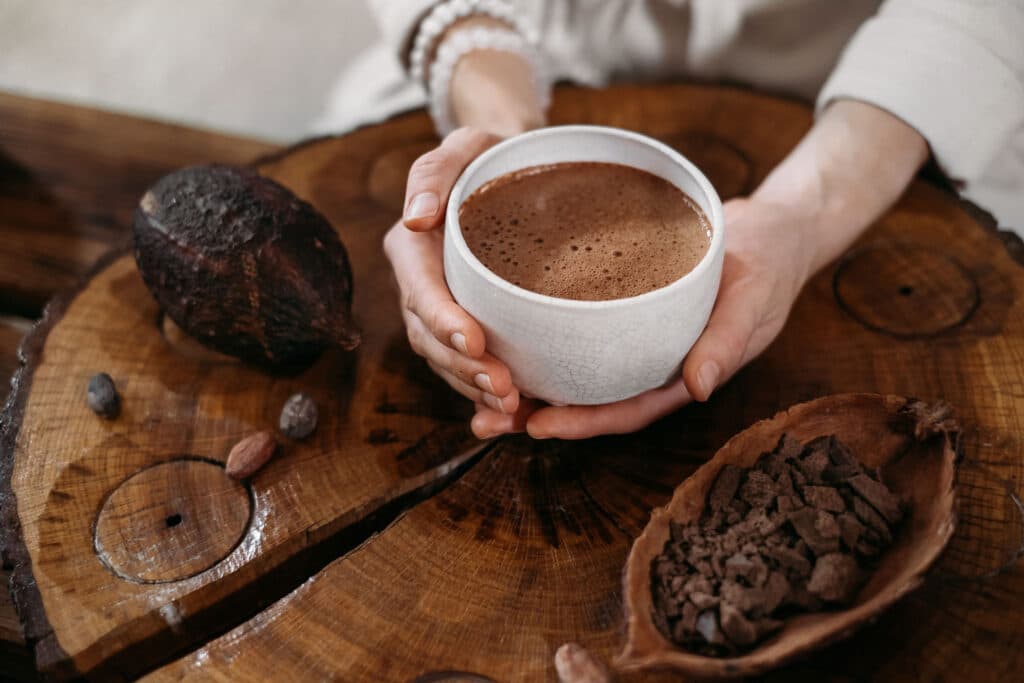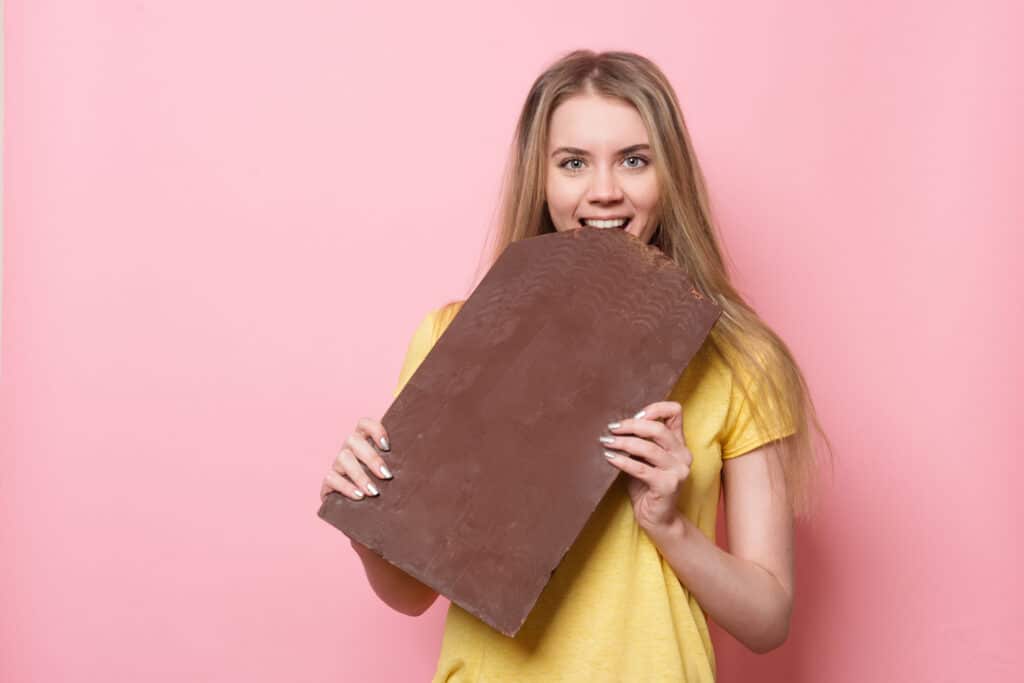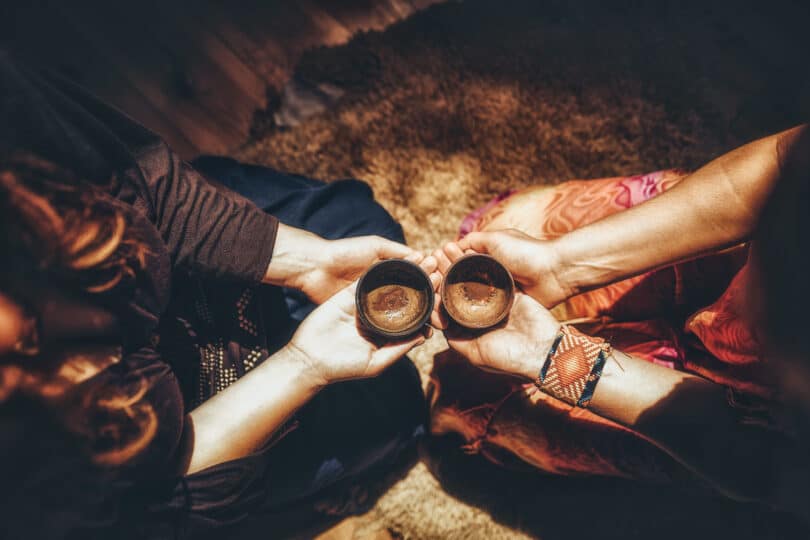There are a lot of natural traditions that have been buried by history for the most part; or are not known about on a large scale. One interesting one involves what is one of the favorite ingredients in many products – chocolate. What are cacao ceremonies, where did they originate, and what are they for? Read on…
What is cacao?
Best to start at the beginning. Before getting into what a cacao ceremony is, let’s see what we’re talking about. You know how when you buy a nice bar of chocolate, it species the percentage of cacao? Well, that’s the same cacao we’re talking about now. The word is written in two different ways: cacao and cocoa; which for the most part, are used interchangeably.
Cacao is very strong, and chocolate products only contain a certain percentage. Chocolate candy involves other ingredients like a ton of sugar; and chocolate products are often categorized both by the sugar content, as well as the cacao content. The term ‘semi-sweet’ indicates a product has more sugar than bitter chocolate, and less than milk chocolate. The cacao percent actually refers to the cacao in three forms: chocolate liquor, cacao butter, and cacao powder. The higher the percentage of cacao, the less sugar; and the more bitter the product.
Milk chocolate products have the least cacao, sometimes only about 10%. This chocolate also includes about the same amount in milk solids. Bittersweet has at least 35% cacao, and bitter chocolate has at least 35%, and usually up to about 55%. I’ve bought chocolate in specialty stores that boasted upwards of 70%.

Chocolate is made by roasting cacao seeds and grinding them. There is no sugar in this, and the resulting product is extremely bitter. It also doesn’t start out tasting like the chocolate we’re familiar with. Before anything else is done, the beans are fermented in order to gain the chocolatey taste we know and love. According to Statista, the current US chocolate market is worth $53.46 billion; with expected continued yearly growth until 2028, of $7.2 billion a year. Chocolate is said to be one of the most desired flavors in existence.
The origins of cacao
Different plants grow in different places; but some plants are more common to certain areas. Much of the time a plant starts in one location, and is then introduced to new places. Right now, cacao is grown in many countries of the world, however it originated in the tropical areas of Mexico.
Cacao has been made into a drink for much of history. It’s use possibly started as early as 4,000 years ago. The Olmec of Yucatan are one of the early civilizations to use cacao for spiritual purposes, and that population dates back to the 19th century BC. The word ‘cacao’ comes from ‘cacahuatl,’ from the Aztec language of Nahuatl. The Mayans also had words for cacao, like ‘Ka’kau’, translated to ‘heart blood,’ and ‘Chokala,’ which means ‘to drink together.’ The Mayans saw cacao as a way to re-balance oneself and communicate with the divine.
In the chocolate world of today, the beans are fermented first; and this is sometimes done for a ceremony as well. After this, the beans are dried, cleaned off, and then roasted. The shell of the bean is removed, and the remaining part is called a cacao nib. This is ground down to create a powder, which is pure chocolate. When this powder is heated, it dissolves into something called chocolate liquor. This beverage can be taken down as is (like for ceremonial use), or cooled to form cacao solids and cacao butter. Most chocolate sold today is a mix of cacao solids, cacao butter, and/or other vegetable oils and sugar.
Cacao was introduced to Europe when Spain colonized Mexico. It didn’t really become a big thing till around the 17th century, when its use as a beverage ingredient in that region, was popularized. While Spaniards introduced the plant to different parts of Asia, other Europeans subsequently introduced it to South Asia and West Africa.
Though cacao’s known history in Mesoamerica goes back the farthest, the biggest exporter of chocolate today, is West Africa. Countries like Ghana and Côte d’Ivoire are the largest producers, accounting for some 60% of the world’s chocolate market.

What are cacao ceremonies?
Cacao is chocolate, we know this already. And unlike magic mushrooms, or even cannabis, its something nearly everyone will eat at some point. As it is so popular, one of the things we know about its mass use, is that it doesn’t cause the same kind of psychoactive effects as drugs like psychedelics. In fact, we all eat a lot of chocolate, and no one gets high. We know it has caffeine, at the rate of approximately 9-12mg per 1-1.5oz, but the reality to chocolate is that we can eat it and go on with our day. So what were these cacao ceremonies about, if it wasn’t about altering consciousness?
There was never one specific use, as different cultures had their own rituals and purposes. What rituals generally had in common, was using the cacao to invigorate spiritual practices, possibly a nod to the caffeine in the plant. Cacao ceremonies are still performed today, in the same general vein, though with modern leanings.
Back in the day, these cacao ceremonies were held for different purposes. If it was harvest time, then a ceremony might be held for the god of rain as thanks for previous seasons. It was also used as a part of wedding ceremonies to promote fertility, to help with births, during funerals to calm the spirit of the dead and help them lift off to the afterworld, by priests in regular practice, and for a number of other life events. Sometimes it was used directly as a sacrifice to the gods.
A cacao ceremony in its most basic form is meant to uplift the overall mood of a community, increase energy, make people more open, heighten intuition, and promote other personal and spiritual feelings. Cacao drinks were also used for emotional and spiritual healing, and still are today.
These days there are different kinds of cacao ceremonies you can encounter. Some that are more about meditation and breathing, some that are more about spiritual dance, some geared toward group connection, and anything in between. It can be as simple as a person performing a ritual in their own home, or done in the traditional way with a group led by a trained leader.
The cacao prepared for a ceremony is not sweet like the chocolate in stores. Its made in its natural form of raw, sun-dried cacao beans (often not fermented). You boil water, and add the ground nibs to the boiling water. Part of the ritualistic part is about intention, and this must be done with love and good vibes. This is all mixed until the cacao is melted in. No further processing is done, which indicates a very strong and bitter drink. Sometimes spices like cinnamon, or sweeteners like honey, are added for taste.

One thing to remember about ceremonies today, is that we don’t celebrate the same religion or gods that the people of ancient Mesoamerica did. Therefore our reasons to do it, are not the same. The meaning of the ceremony is often broader, not attached to any specific life events, and is often practiced by agnostic participants. In this sense, cacao ceremonies of today done by people unassociated with the still-practicing native tribes; are not terribly relevant to what used to go on, or what still does in practicing communities.
Can you get high at a cacao ceremony?
Come on, we’re all thinking it. Is there something about this particular way of making chocolate that causes psychoactive effects beyond basic caffeine? First of all, there is the caffeine. As an unprocessed drink, which isn’t diluted with sugar and other ingredients, the caffeine level might be higher in a cacao ceremony, than what is used for product production. Think about that first, as it means a caffeine buzz; and all the energy, and mood-lifting involved.
But the truth is, no one talks about getting high beyond this; and there’s nothing to indicate that even very strong chocolate will produce anything more than a reaction to caffeine. Cacao is not written about like DMT or magic mushrooms, there’s no expectation of altered consciousness. The site criobru.com quotes Shamen Keith Wilson, who explains the ceremonies like this, with no talk of getting high:
“A Mayan legend tells us that whenever there is an imbalance between humans and nature, cacao comes from the rainforest to open people’s hearts and return the planet to a state of harmony. Some shamans, therefore, consider cacao the ‘food for the shift.’ It represents the new order of love and peace, which is being cultivated right now.”
Cacao contains another compound that might enhance mood, though its also not associated with creating a high. This main alkaloid called theobromine, has shown to have similar properties as caffeine, but might ruin the experience at high doses. It’s spoken about as part of what makes chocolate desired. Its also responsible for much of the antioxidant effect, sometimes said to be stronger than that of black or green tea. Chocolate offers many benefits, like a large amounts of zinc, iron, and magnesium; and flavonoids that may improve brain health, while lowering the risk of heart attacks and strokes.
Research also provides evidence that cacao can help balance blood sugar, and cholesterol; might improve asthma; could be beneficial for the skin; and as mentioned before, is possibly a factor in increasing mood. We have long associated chocolate with feeling good, especially women. While the jury is certainly out on exactly why, chocolate is associated with both increasing progesterone, and decreasing the stress hormone cortisol.

Conclusion
If you’re up for a ritualistic experience, but don’t want to go as far as magic mushrooms or ayahuasca; cacao ceremonies provide some of the same thinking, with less psychoactive response. If you’re not so into a ceremony, but want to get more cacao in your life; there are plenty of products, and raw materials to get you on your way.
Hey readers, thanks for coming by! We’re happy to have you with us at Cannadelics.com, an independent publication knee deep in the worlds of cannabis, hallucinogens, and beyond. We miss you when you’re gone, so come by often! And sign up to our Cannadelics Weekly Newsletter, so you’ve got access to the best product promotions, along with the news.









